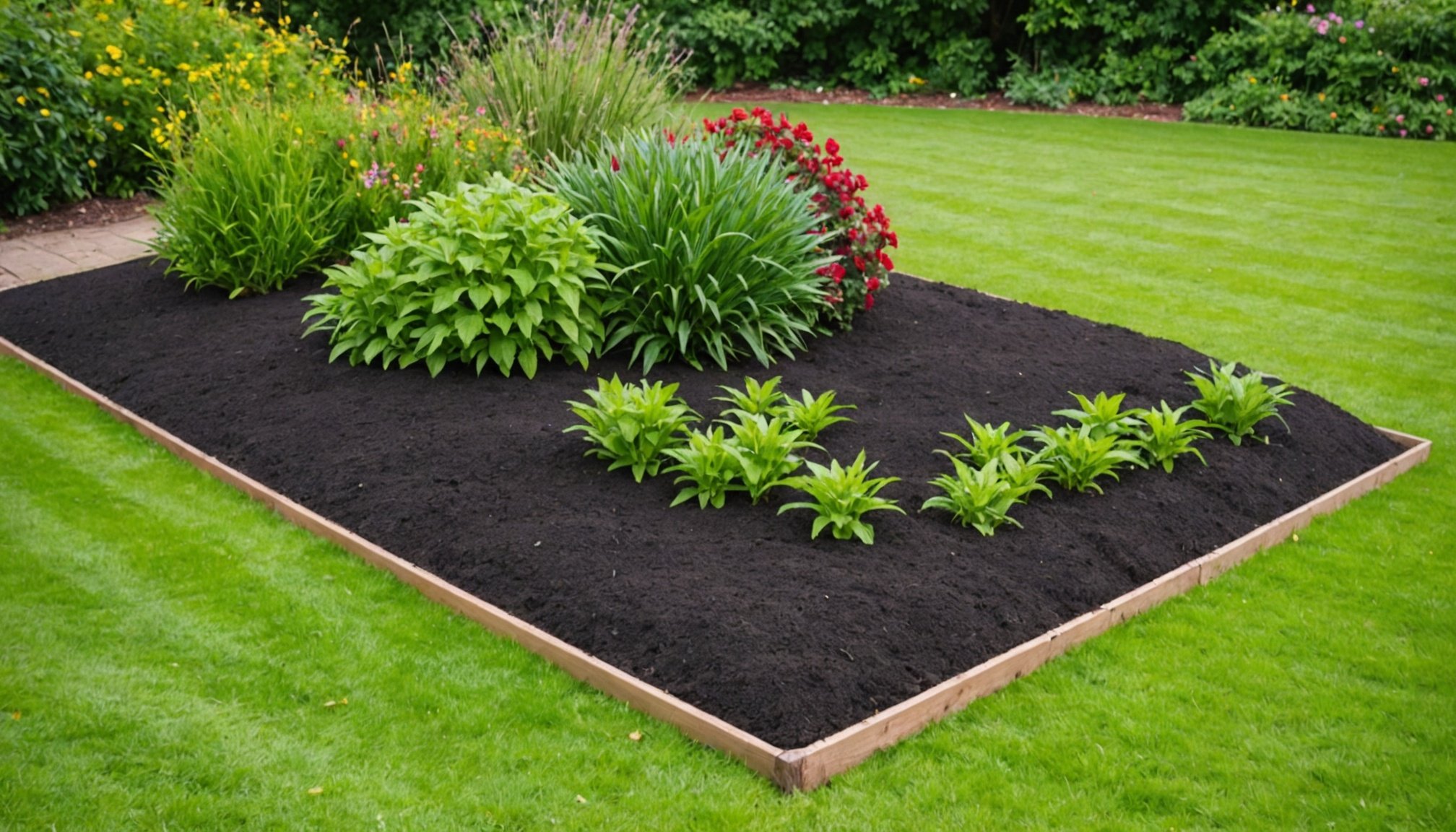Ultimate Guide to the Best Mulching Techniques for Weed Control in UK Flower Beds
Understanding the Importance of Mulching in Garden Maintenance
Mulching is a simple yet effective technique that can transform your garden into a thriving and well-maintained oasis. At its core, mulching involves covering the soil with a layer of organic or non-biodegradable materials to enhance soil health, retain moisture, and most importantly, control weeds. In the UK, where the climate can be quite unpredictable, mulching is particularly beneficial for flower beds.
“Weeds are a constant battle for gardeners, but mulching can be a game-changer,” says Jane Smith, a seasoned gardener from London. “It not only suppresses weeds but also improves the overall health of your plants.”
This might interest you : Maximizing Urban Living: Are Vertical Wall Planters the Key to Greening Limited UK City Spaces?
Types of Mulches: Choosing the Best for Your Garden
When it comes to selecting the right mulch for your garden, you have a variety of options to consider. Here are some of the most common types of mulches and their characteristics:
Organic Mulches
- Leaf Mould: Made from decomposed leaves, this mulch is rich in organic matter and nutrients. It is excellent for improving soil structure and fertility.
- Compost: Garden compost is a mix of decomposed organic materials like food scraps, grass clippings, and vegetable peels. It enriches the soil and supports healthy plant growth.
- Wood Chips: Wood chips are a popular choice for mulching. They are biodegradable and can help retain moisture in the soil.
- Straw: Straw is lightweight and easy to spread. It is particularly effective in suppressing annual weeds.
Non-Biodegradable Mulches
- Plastic Sheet Mulch: This is made from polyethylene or polypropylene and is effective in suppressing weeds by blocking light and preventing seed germination. However, it is not biodegradable and can harm the environment if not disposed of properly.
- Gravel or Stone: These materials are durable and can last for many years. They are good for retaining heat and suppressing weeds but do not add organic matter to the soil.
How to Apply Mulch Effectively
Applying mulch is not just about throwing some material on the ground; it requires a bit of planning and technique to ensure it works effectively.
Also read : Transform Your Compact UK Courtyard: Creative Ways to Add a Vegetable Garden
Preparing the Soil
Before applying mulch, make sure the soil is clear of weeds and debris. If you have a lot of weeds, consider using a weeding tool or herbicide to clear them out. Then, rake the soil to loosen it and improve drainage.
Layering Mulch
The ideal layer of mulch varies depending on the type of mulch you are using. Here are some general guidelines:
| Type of Mulch | Recommended Layer Thickness |
|---|---|
| Leaf Mould | 2-3 inches |
| Compost | 1-2 inches |
| Wood Chips | 2-3 inches |
| Straw | 2-3 inches |
| Plastic Sheet Mulch | Follow manufacturer’s instructions |
| Gravel or Stone | 2-3 inches |
Timing is Everything
The best time to apply mulch depends on the season and the type of plants you have. For most gardens, spring and autumn are the best times to mulch. In the spring, mulch helps retain moisture and suppress weeds as plants start to grow. In the autumn, it protects the soil from frost and retains heat.
Effective Mulching Techniques for Weed Control
Mulching is one of the most effective methods for controlling weeds in your garden. Here are some techniques to make the most out of your mulching efforts:
Suppressing Annual Weeds
Annual weeds are those that complete their life cycle within a year. These include weeds like chickweed and annual meadow grass. Organic mulches like straw and wood chips are particularly effective in suppressing these weeds by blocking light and preventing seed germination.
Managing Perennial Weeds
Perennial weeds, such as dandelions and bindweed, are more challenging to control because they have deep roots. For these, a thicker layer of mulch or a combination of mulch and other weed control methods may be necessary. Biodegradable mulches like compost and leaf mould can help improve soil health, making it harder for perennial weeds to thrive.
Practical Tips and Advice
Here are some practical tips to help you get the best out of your mulching efforts:
- Keep the Mulch Layer Consistent: Ensure the mulch layer is evenly spread to prevent weeds from growing through thin spots.
- Water Wisely: Mulch helps retain moisture, but it’s still important to water your plants regularly, especially during dry spells.
- Replenish Mulch: Organic mulches break down over time, so make sure to replenish them periodically to maintain their effectiveness.
- Avoid Volcanic Mulching: Piling mulch around the base of plants can cause more harm than good. Instead, keep the mulch a few inches away from plant stems to prevent rot and disease.
Case Study: A Successful Mulching Project
Sarah Johnson, a gardener from Manchester, shares her experience with mulching:
“I was struggling with weeds in my flower bed until I decided to try mulching. I applied a 2-inch layer of wood chips in the spring and was amazed at how it suppressed the weeds. By the summer, my garden was looking healthier than ever, and I barely had to weed at all. Now, I mulch every year and it’s made a huge difference in my gardening routine.”
Mulching is a simple, effective, and environmentally friendly way to control weeds and enhance the health of your garden. By choosing the right type of mulch, applying it correctly, and maintaining it over time, you can create a beautiful and thriving garden with minimal effort.
As Jane Smith puts it, “Mulching is not just about controlling weeds; it’s about creating a healthy ecosystem where your plants can flourish. With the right techniques and materials, you can enjoy a weed-free garden all year round.”
Additional Resources
For those looking to dive deeper into the world of mulching, here are some additional resources:
- Royal Horticultural Society (RHS) Guide to Mulching: This comprehensive guide provides detailed information on different types of mulches and how to use them effectively.
- Gardeners’ World: This popular gardening show often features segments on mulching and other gardening techniques.
- Local Gardening Clubs: Joining a local gardening club can provide you with hands-on experience and advice from seasoned gardeners.
By following these guidelines and tips, you’ll be well on your way to creating a stunning and low-maintenance garden that you can enjoy for years to come.











